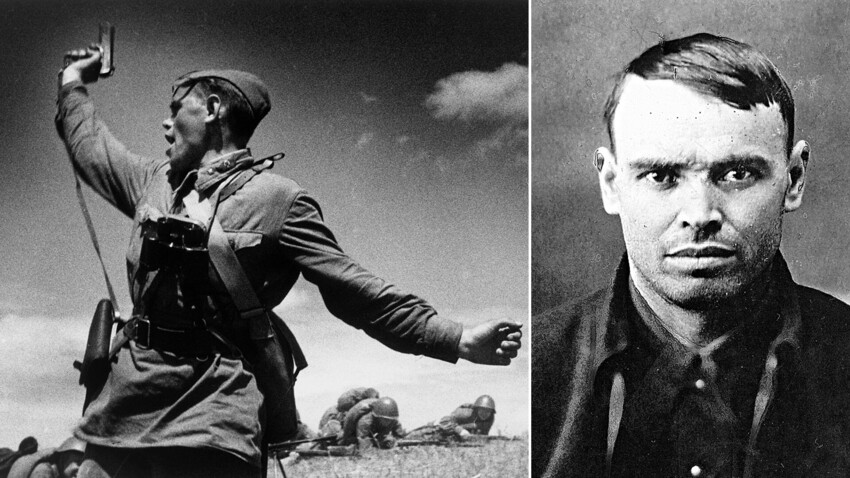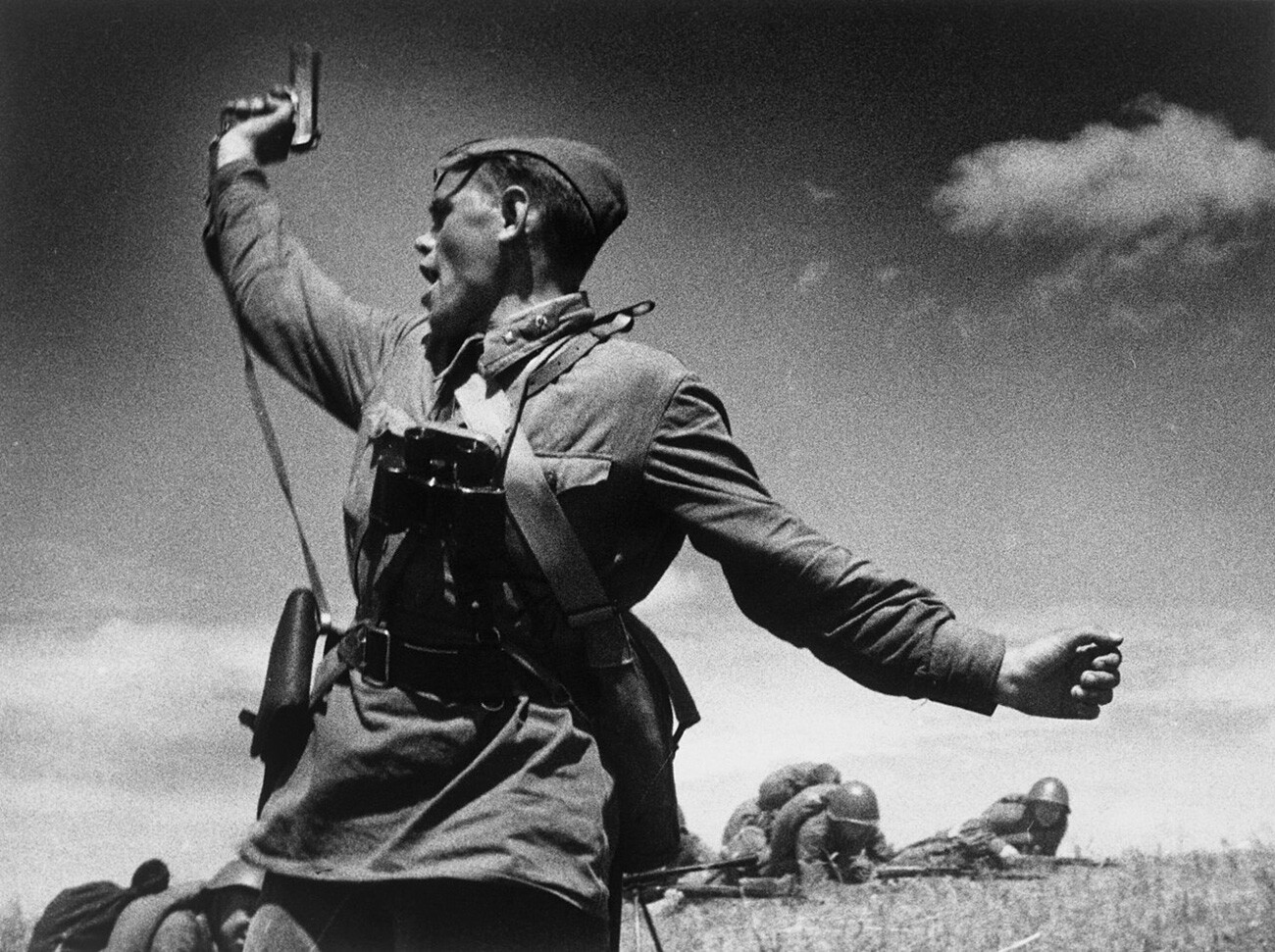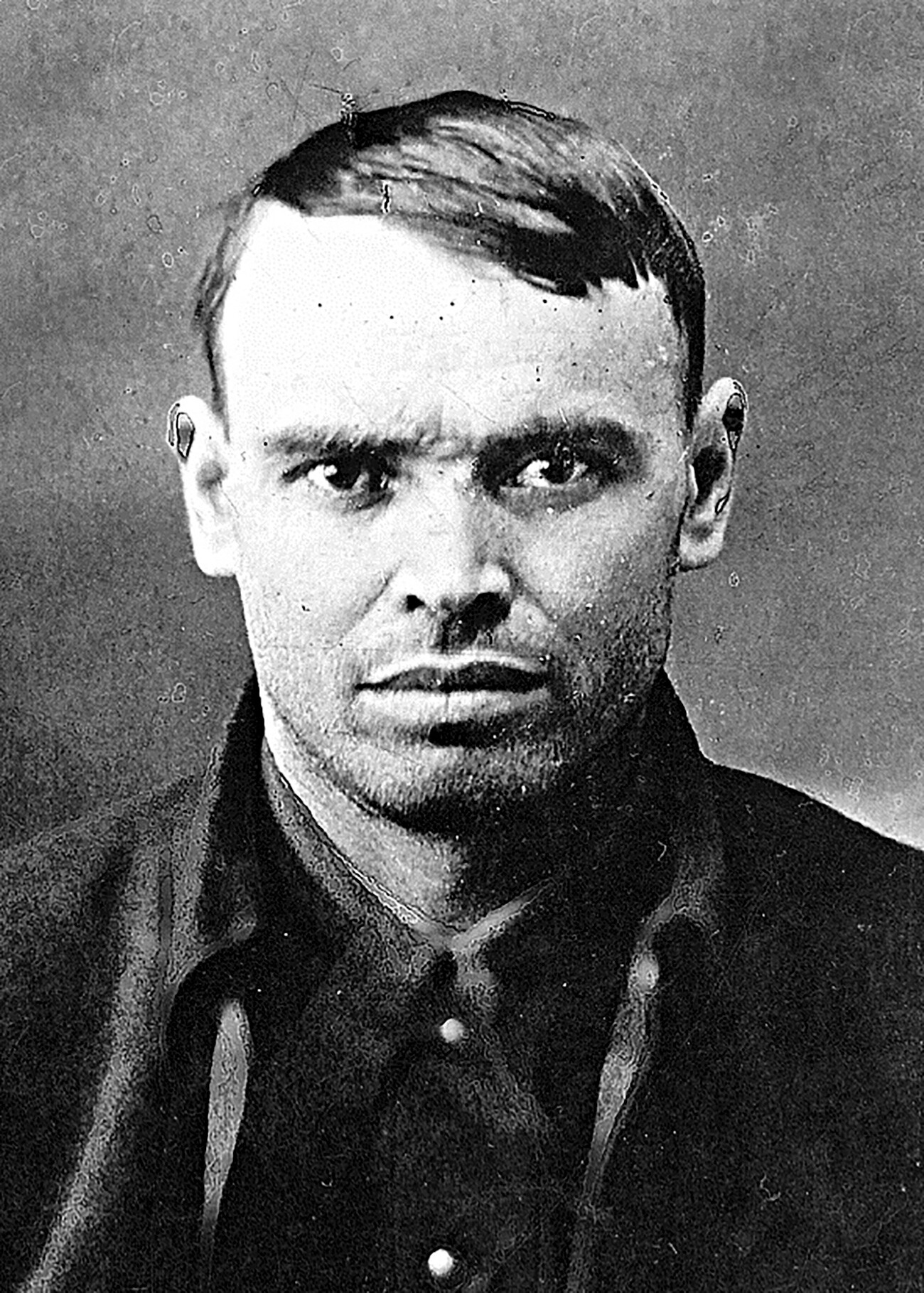
War correspondent Max Alpert’s photo ‘Kombat’ (“Battalion Commander”) shows a commander calling his troops into battle. It possesses a similarly iconic status to Khaldei’s ‘Raising a Flag Over the Reichstag’, or ‘The Motherland Calls’ monument. It graced the covers of numerous American magazines and even appeared on one of the Congo’s 1985 postal stamps.
Alpert captured the figure of the man on July 12, 1942, on the Southern Front, during the battle under Voroshylovgrad (modern-day Lugansk) and decided that he must have been a battalion commander, giving the photograph its name. The man’s actual story became known only in the 1970s.
The story of how the photo was made would later be found in Alpert’s 1962 memoirs. The battalion in question was specified by headquarters and the photographer - who had never been in the field - headed out to the front to capture the counteroffensive. Alpert went into the trenches in search of the commander.
“He turned out to be a modest, sociable man, who used to serve in some factory department before the war,” Alpert wrote.
The photographer decided not to disturb the soldiers preparing for a tough day and didn’t ask unnecessary questions: “The soldiers, speaking in hushed tones, were focused on preparing for the offensive, cleaning and checking their weapons and equipment, writing letters to their loved ones… I received permission from the battalion commander to be close by during these decisive moments.”

Before the offensive began, the commander stood up tall from the trench, raised his TT gun high overhead and gave the order to attack. “With cries of ‘hoorah!’ the soldiers threw themselves into battle… That is the moment I managed to capture… Minutes later, word had arrived: ‘The battalion commander has been killed!’ I never managed to find out his last name, as I was immediately recalled back to headquarters,” Alpert wrote.
The photograph depicting the last minutes of the battalion commander’s life was one of hundreds taken that day. And it never made it to any newspapers at the time. Instead, it spent years in the photographer’s personal collection, before finally being published in the newspaper ‘Pravda’ in 1974, to mark another anniversary of the Great Victory.
After the photo was published, the author received hundreds of letters from people, claiming that it depicted a relative of theirs. At least one man claimed that he’d recognized himself in the photograph. One letter from Zaporozhye, however, curiously claimed that the figure belonged to one Aleksey Gordeevich Yermenko, a political commissar who went missing in action on January 14, 1942. The journalist wouldn’t even have paid any attention to it (especially given such a discrepancy with dates: his photo was taken six months later), if it weren’t for one fact: the letter arrived with several photos, depicting the commander himself.
Alpert began an investigation that would last two years. The journalist requested more photos and made enquiries about MIA political commissar Yeremenko. It turned out that the same battalion had had another Yeremenko - a cadet with the same initials - fighting side by side with the commander. It was he who went missing in 1942, while the commander’s family was mistakenly sent word of his disappearance.
The 36-year-old political commissar Aleksey Yeremenko was born into a simple nuclear family and, by the age of 14, had already gone to work at a railroad to earn money to help his relatives. He would soon get a transfer to a factory, before starting his party career in earnest, becoming chairman at the ‘Avangard’ collective farm. He presided over animal farms, which raised cattle, pigs and horses.

When the war began, Yeremenko had an official excuse that protected him from serving, but he wasn’t about to sit out the fight in the rear, so he ended up volunteering for the front. In the summer of 1942, he served as a junior commissar, befitting a lieutenant. But, on the last day of his life, he ended up substituting the wounded company commander and shouldering the responsibility of sending the soldiers into battle: this led Alpert to mistake him for the actual commander.
Aleksey Yeremenko was buried in a mass grave near the village of Khorosheye, in Lugansk Region. A monument was later erected in his honor, modeled on Alpert’s famous photograph. His silhouette can also be seen gracing Russian coins issued in 1995, as well as the ‘Victory’ postal stamps from 1985.
If using any of Russia Beyond's content, partly or in full, always provide an active hyperlink to the original material.
Subscribe
to our newsletter!
Get the week's best stories straight to your inbox